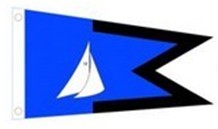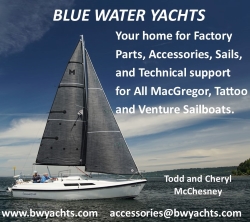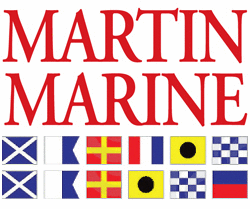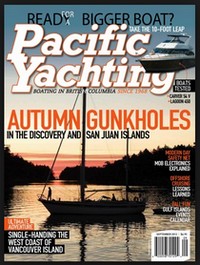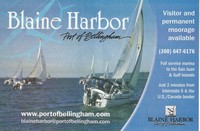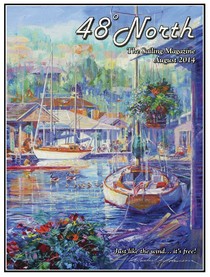So You Think You Want to Buy a MacGregor Sailboat?
This document has been put together by MYCBC Members and MacGregor owners. It is only the opinions of our members to help you consider the options in purchasing a MacGregor Sailboat. Do not treat these opinions as a recommendation of one model or another. You must make your decisions based on what is best for you and your planned usage of the boat.
You can print it with the button above, browse through the document on this page or jump to specific sections in the index below.
History
MacGregor Yacht Co. was founded by Roger MacGregor in the early 1960s. The company was in business until early 2013, having been succeeded by Tattoo Yachts that were built for a brief period by his daughter after Roger MacGregor retired. The MacGregor sailboats are one of the most environmentally friendly boats on the market.
Model Comparisons
We will express s our opinions on the 5 most recent models that Roger MacGregor produced. They are the “Classic” (S&D), MacGregor 19, MacGregor 26X, and MacGregor 26M and Tattoo. Each of these boats is unique in design and different in many ways from the others. The only significant things they have in common is fibreglass construction, a water ballast system, trailerable and the MacGregor brand. We will discuss many of the differences but if at all possible, you should physically see each of the models to truly identify which would be the best for you.
| 26 Classic | MacGregor 19 | MacGregor 26X | MacGregor 26M and Tattoo | |
| Years in production | 26D: 1987 – 1990
26S: 1990 – 1995 |
1992 – 1995 | 1995 – 2003 | 2003 – 2012 |
| Description | Water ballast, Queen berth, pop-top, D-dagger board, S-swing centerboard |
Water ballast, Power sailer, Full Berth, Swing Centerboard | Water Ballast, power sailer, Queen berth, Swing Keel, Full Height Cabin | Water Ballast, power sailer, Queen berth, Dagger Board, Full Height Cabin |
| How many produced | Appx. 6000 | Appx. 800 | Appx. 5600 | Appx. 3600 |
| Length | 25’ 10” | 19’ | 25’ 10” | 25 10”’ |
| Beam | 7’ 10” | 7’ 6” | 7’10”’ | 7’7”’ |
| Weight | 1650 lb + 1200 lb water ballast | 1250 lb + 800 lb water ballast | 2250 lb + 1400 lb water ballast | 2550 lb (300lb fixed ballast) + 1150 lb water ballast |
| Engine capacity | Max 10 hp* | Max 40 hp officially, 40-50hp realistically* | 10-50 hp officially, 30- 60 hp realistically* | 10-60hp officially, 30 – 70 hp realistically* |
| Max speed w/max hp | 7 mph | 25 mph | 24 mph | 24 mph |
| Passenger capacity | 6 persons | 6 persons (960 lb) | ||
| Typical cost of well outfitted new boat. | $ 10,000 – $15,000 | $ 10,000 – $15,000 | $ 25,000 – $30,000 | $ 40, 000 – $45,000 |
*In the US and Canada, sailboats do not have a legally regulated max HP, it is a manufacturer recommendation. The HP recommendations above are based on a mix of real world experience and the observed performance characteristics of each boat, i.e a 26Classic won’t go faster than 7 even if you put a bigger engine on it, the hull design doesn’t allow it.
Opinions
Inside Comparisons
Very difficult because many boats have significant modifications including lengthening, shortening and moving key features. A good overall comparison is to view the 19 as being similar to a canopy on a pick-up truck: you can fit everything and yourself in there but it is pretty cramped. The Classic would be like a pop-top canopy. If you pop the top up you can actually stand in a small area, but you must put the top back down before you can go anywhere. The X and M are like a full-size camper (with no slide-outs). You can stand up in the center area but still must crawl into the beds. In the end, interior layout is VERY MUCH a matter of personal taste, especially between the 26X and 26M which have similar interior volume but completely different layout.
| Classic | 19 | 26X | 26M and Tattoo | |
| V-berth (forward) | V berth suitable for kids, most adults sleep in stern berth. | Easy to extend length but it is V-shaped. Most adults sleep here. | Easy to extend length but it is V-shaped. Most adults sleep here. | V-shaped and not for tall folks. Most adults sleep in stern berth. |
| Stern berth (under cockpit) | Queen size but limited head room. Better than the 26X, not as good as the 26M. | Full size bed, very limited headroom, mostly kids only. | Queen size but not much head room. Most adults sleep forward. | Queen size with better head room.
Most adults prefer to sleep here. |
| Head | Has a door on it for privacy. | Enclosed with a real door on the starboard side just in front of the rear berth, quite small. | Enclosed with a real door on the starboard side just in front of the rear berth. Private if you fit, not at all if you can’t close the door. | Enclosed with a door on the starboard side at the front near the V-berth. Smaller than the X head, but still fairly private even if you can’t close the door. |
| Galley | Midship at sit down level, no stove was standard, so there is a wide variety of installed stoves. | Single burner stove under a lift up v-berth cushion. | On the port side roughly amidships. Fixed in place, many different stove configurations. | 2003 – 2004 boats have a fixed midship galley on Starboard side.
2005 + boats have a sliding galley at stand-up height on the Port side. |
| Dinette Table | Removable and stored under the aft berth. Can sit 4 | Removable and stored under v-berth, can sit 2 maximum. | Room for 4 to sit comfortably | Room for 4 to sit comfortably |
Cockpit Comparisons
| Classic | 19 | 26X | 26M and Tattoo | |
| Cushions | Seat and backrest cushions optional. | Seat cushions optional. | Seat & backrest cushions optional. | Seat cushions optional. |
| Legroom | Lots when seated, seat height is low for tall people. | Limited, it’s a small boat with a small cockpit. | Room for 6 pairs of feet when sitting | Room for 4 pairs of feet. Stern mounted rail seats (an option from BWY) add room for 2 more. |
| Entrance to cabin | Removable hatch small stair down to the inside | Removable hatch, small step to the inside. | Large hatch from floor to top of cabin. Small ledge to step over, short ladder to inside. | Raised seating area at front of cockpit creates a step over and a taller ladder to inside. |
Rigging Comparisons
| Classic | 19 | 26X | 26M and Tattoo | |
| Backstay | Fixed, adjustable option. | Fixed, adjustable option. | Fixed, adjustable option. | No backstay. |
| Rotating Mast | No | No. A few early models had a rotating mast that worked poorly. | No. | Yes, improves air flow at luff of mainsail to help upwind performance. |
| Traveller | Optional | No | No | Yes, Improves Mainsail trimming options. |
Sail Inventory
Unless the sails are new (a couple years or never used) you should plan on upgrading as soon as possible. New sails will make the boat easier to sail, improve performance, and reduce heeling.
| Classic | 19 | 26X | 26M and Tattoo | |
| Headsail | Most use Genoa | Most use a Genoa | Most use a Genoa | Most use a jib. |
Boat Use
What do you want to do with your boat? Rating scale 0-not a good idea up to 5- will do the job well
| Classic | 19 | 26X | 26M and Tattoo | |
| Sit in marina for happy hour | 5 | 4 – A little small | 5 | 5 |
| Race other sailboats | 5 | 1 | 4 | 4 |
| Pull a tube or skier | 0 | 4 | 4 – big engine | 4 – big engine |
| Live aboard | 1 | 0 | 2 | 2 |
| Cruise for several days | 4 | 3 – minimalist | 5 | 5 |
| Day sail from marina or trailer | 5 | 5 | 5 | 5 |
| Fish | 4 | 4 | 4 | 4 |
| Trailer all over the country | 5 | 5 | 5 | 5 |
Trailerable Boat Advantages
One key advantage of a trailerable sailboat is the flexibility to launch it in many different areas. You can quickly access a wide variety of cruising destinations.
Living in the Vancouver area, some key launch points may be:
- Vanier Park (Downtown Vancouver)
- Rocky Point (Port Moody)
- Mac Donald Park (Richmond)
- Blaine (USA)
- Harrison Lake
- Okanagan Lake
- Shuswap Lake
- Vancouver Island launch points (trailer boat to Vancouver Island)
Keeping a MacGregor on a trailer has several significant advantages:
- No monthly or annual marina costs
- No bottom paint required
- Lower operational and maintenance costs compared to a boat that is always in the water (particularly salt water)
- Ability to work on the boat, load it for a trip at home in the driveway
Purchase Survey
Items are listed in order of decreasing cost to repair or replace (much of this information came from a post by TheSailingRode – Purchase inspection checklist 26M on macgregorsailors.com)
General
How as the boat been used? Has the boat always (or often) been:
- trailered
- moored
- cruised in fresh water and or salt water
- stored outside or garaged
- used regularly and accumulated moderate hours (good)
- stored for long periods and hardly used (scary)
Engine
Is it the right size for how you plan to use the boat? For the X and the M, 10 hp will allow you to day sail from the marina but you will be disappointed if you are planning on cruising long distances (50-60 hp seems to be the minimum people are happy with for cruising). For the M19, nothing less than 40 hp makes sense for most people, the 19 is much more of a powerboat hull, if you can’t get it on plane, you can’t go faster than 7 Kts. So, a 25 or 30 hp engine makes no sense.
2 stroke vs 4 stroke? 2 stroke motors are loud, often smoky, and require you to add oil to fuel, they are also simple to work on and often quite reliable, although they are also all getting older and tired. 4 stroke motors are much quieter and use much less fuel. Even the Evinrude Etec, the most advanced 2 stroke ever, is still about twice as noisy as a good 4 stroke. How important is noise to you?
As this is the most expensive item you need to be sure it is the right motor, well maintained and operating well.
Start engine on an “earmuff” style flusher running on a garden hose, let it run for a couple minutes, try forward / reverse and throttle. Make sure it idles smoothly. There is little point in revving it up much since it is not under load.
Does shifter and throttle move easily? If not, it may need new cables or work on the control box.
Check cable connection right near motor, they often crack due to the sharp angle when tilted up.
Tilt engine all the way up/ down to make sure it moves smoothly.
If you are not good with marine engines, find a mobile marine mechanic to check out the engine, compression, lower unit gear oil, and engine oil. Immediately service the engine after purchase, including replacing the impeller, unless the previous owner can show it was just done. Maintain a consistent service schedule.
Ask previous owner for honest hours on engine. Note: unless there is an engine meter, this is a guess by most owners. Fortunately a well cared for engine will last more hours than most of us can put on it in a lifetime, nearly all outboards die, directly or indirectly, from corrosion, especially if they live in salt water.
Check inside fuel tank for clean / clear gas. Check fuel lines, no cracks? flexible? Check fuel connections for leaks. Fuel lines have a life span, but are not expensive to replace.
Trailer
A good new trailer is $3000-$5000. Most trailers are not maintained well, so plan up to $1000 to repack bearings and likely replace the brakes unless the previous owner shows evidence that it was recently done.
Look over all tires closely for wear and cracks. Ask how old the tires are; they should be replaced at least every 10 years, even if they look new.
Check for and the condition of the spare tire. While not stock its nice to have a good spare.
Check trailer tongue carefully for rust. The square tongue rail is prone to rust from the inside because it is only painted on the outside, be sure to tap it all around with a hammer to make sure it is solid and sound. This part has been known to fail suddenly, but usually shows weakness before it fails, often you can easily poke holes in it from the bottom up if it is near failure.
Check tongue winch operation.
Check bow eye on boat hull, make certain it is tight to the hull with no gaps.
Check tongue jack operation.
Check the trailer lights, stop, blinkers, running lights.
Cushions and Canvas
Open cushions to look for mold on foam. Check the top and bottom.
Check canvas on dodger, Bimini and enclosure for damage, mold and broken fittings.
Sails and Running Rigging
Lay out all the sails, look for stains / damage. Plan on replacing as soon as possible unless they are in like new condition. The stock sails were fine, but nothing special, new sails will help the boat sail much better than they did new and MUCH better than tired sails. Depending on use, the factory sails are typically good for about 5 years if well cared for, don’t kid yourself about the condition of older sails
There are many options for new sails. We recommend Blue Water Yachts (Seattle). Estimated cost for Main and headsail starts about $1500 US
Check headsail sheets, mainsheet, and halyards for wear.
Check operation and security of all cleats, blocks, and clutches.
Hull and Deck
Ask the previous owner if there have been any fiberglass repairs. This is especially important if the bottom is painted and you cannot see all the fiberglass. Damage that has been properly repaired should not be a concern, DIY or cheaply done repairs can be a major issue.
Check for antifouling paint and the condition. If you plan to keep the boat on the trailer, bottom paint is a negative, it is one more thing to maintain and slows the boat somewhat, both under sail and under power. If you plan to moor the boat full time or seasonally, bottom paint is necessary, so the condition of it is important, a repaint will cost about $1000.
Use a flashlight to look in each compartment: look for mold, look for any evidence of hull repairs. Look for water stains on wall carpet on the 26M.
On all boats except the 26M, the chain plates often leak rain water and need sealing regularly, sealing them is simple, but important.
Wiggle each stanchion and pulpit to make sure they are secure, look at all the bases for cracking, look inside underneath each one for leaking. Small “hairline” cracks in the Gel Coat around fittings are not serious, they are a normal part of aging on fiberglass boats.
Inspect deck to hull joint all the way around boat carefully for any evidence of repairs.
Open and close hatches, check seal for cracks.
Windows, especially top windows on the 26X and 26M suffer from UV exposure, over time they become cloudy and eventually check and crack. Windows that are significantly checked are not as strong as they should be and need to be replaced.
Standing Rigging
Check mast, base plate and boom for damage or bends. If the mast is on deck, it will naturally have some “sag” in the middle due to gravity, but should be straight side to side. If the mast is up, it should be straight side to side, with some bend toward the stern at the tip.
Check spreaders for damage and bending, even a small amount of bend is dangerous and the spreader should be replaced
Check each stay (wire) for frayed wires, especially around the thimbles at the ends and at the spreader tips.
Check all connections to be sure the chain plate pins have “ring-dings” securely installed on the inside and on the 26M check for safety wire on the shackles at the top of the lower and upper shrouds.
Check if the owner has the mast-raising pole and all necessary parts, it is VERY important that no modifications have been made to the system. Many people make changes to make setup “easier”, but usually they are really making it less safe.
Have the previous owner setup the mast. Sadly, many will not be able to do so properly or smoothly, try not to let this turn you off on the boat, the process should be simple and safe on any of these boat, you can learn to do it properly, even if the seller can’t.
Winches should rotate by hand, some may get sticky from non-use and will loosen up.
Check for the winch handle
Steering and Centerboard or Daggerboard
On the 26D or 26M, pull the daggerboard all the way out to check for damage, minor damage at the lower forward and upper forward corners is typical and not a cause for major concern. Minor damage to the trailing edge about 15” down from the top is also common, but if there is a significant chunk gone, it is an issue. The daggerboard is designed to break without damaging the boat if you run it aground hard, so they do get ruined occasionally.
On the 26X, 19 and 26S, deploy the swing keel if the boat is in the water. Determine if it really does drop or is wedged into its trunk. Does the mechanism work to pull the swing keel back up? If the boat is on the trailer, crawl under and inspect the centerboard to make sure it appears undamaged and moves around freely in the trunk.
Raise and lower rudders, they should move freely, if they are sloppy in the rudder heads, this can usually be adjusted by tightening the pivot bolts. On the 26M, look at the rudder stops, they often get bent if the previous owner grounded them while in reverse, they are easy to replace, but should be if they are damaged.
On wheel steered models, make sure that the steering moves freely all the way from right to left. It should move smoothly and freely, you should be able to spin the wheel with your fingers. Late model 26X and eary 26M had a steering system made by Detmar, it is well known for getting stiff and failing, all of these systems should be replaced (if it hasn’t been already), it is not very expensive and greatly improves performance and reliability
Electrical
Check each electrical switch and each light, don’t forget to check mast lights while mast is up.
Look over electrical connections for burn marks. Is the wiring a mess or organized / clean?
If wired for shore power, it is good to have a marine electrical specialist to review as DIY shore power setups are a big source of fires.
Many boats are wired with lots of devices tied directly into the battery posts, you should fix that later if needed.
Test any electrical equipment, GPS, depth sounder, etc.
Miscellaneous
Take the porta-potty apart and look for evidence of leaks. If it’s questionable or yucky, just budget for a new one, they aren’t expensive.
Stand on swim ladder to make sure it isn’t loose or poorly installed.
If the seller is selling the boat with extras such as, portable stove, BBQ, fridge, life jackets, flashlights, fire extinguishers,
flare guns, navigational items, heaters, fans and etcetera, be sure to review that they are in safe operating condition and review for expiry dates.
On Water Test
It is probably not wise to purchase a boat if you have not:
- Seen it operating in the water under sail and under motor
- Seen it rigged, launched, recovered and de-rigged on the trailer
Professional Marine Survey
Pros and Cons of paying for a professional Marine survey – In Canada, this may become irrelevant as insurance companies are starting to require surveys on all older boats. Check your insurance provider. In the US, surveys are seldom required, and not often done on trailerable boats.
| PROS | CONS |
| Gives confidence that a knowledgeable person has checked the boat | Most surveyors deal with larger boats and are not familiar with the intricacies of trailerable boats |
| Issues requiring repairs may be identified. Some may be big others trivial | You may have to actually make ALL of those repairs before you can insure the boat (even the little ones), because they are now documented. |
| Cost of repairs can be used in negotiating a better price for your purchase. | The issues may discourage you from purchasing. Some surveyors think its their job to find fault with every boat, even if the issues are minor or typical for a smaller, trailerable boat. Walk away from any surveyor who wants to find fault with the design of ANY well known production boat, they are all widely used, proven designs. It is the surveyor’s job to find damage and defects, not to give his opinion on what type of boat you should buy. |
| Costs money |
Boat and Trailer Insurance
You do want to have insurance, definitely for liability, and probably for the boat itself. See Presentation Safety and Boat Insurance
Boat Insurance in Canada will cost $ 500 – 700 per year.
Trailer insurance is with ICBC and costs about $ 150 per year
MacGregor Parts
We recommend Blue Water Yachts for all your MacGregor parts and supplies. They are the supplier of genuine MacGregor parts and their knowledge of the MacGregor boats is unsurpassed. Check their website for availability and prices.
Other Resources
MacGregor Yacht Club of British Columbia
Facebook MacGregor Sailboat Owners
Links to MacGregor brochures and manuals on MYCBC website (mycbc.ca)
Original Promotional videos of the MacGregor boats can be found on YouTube



